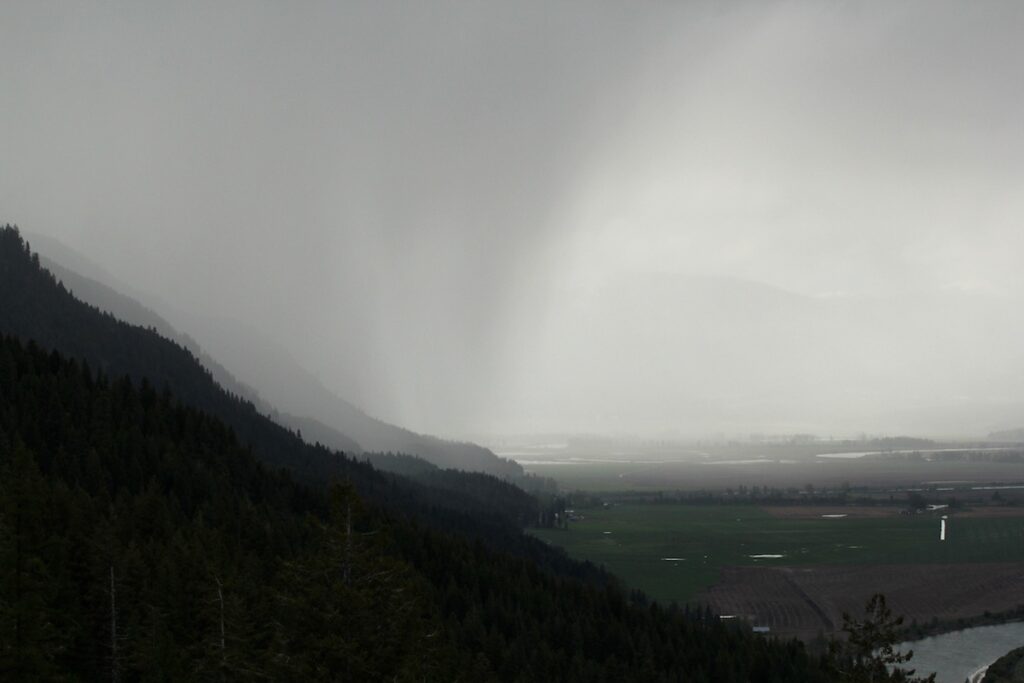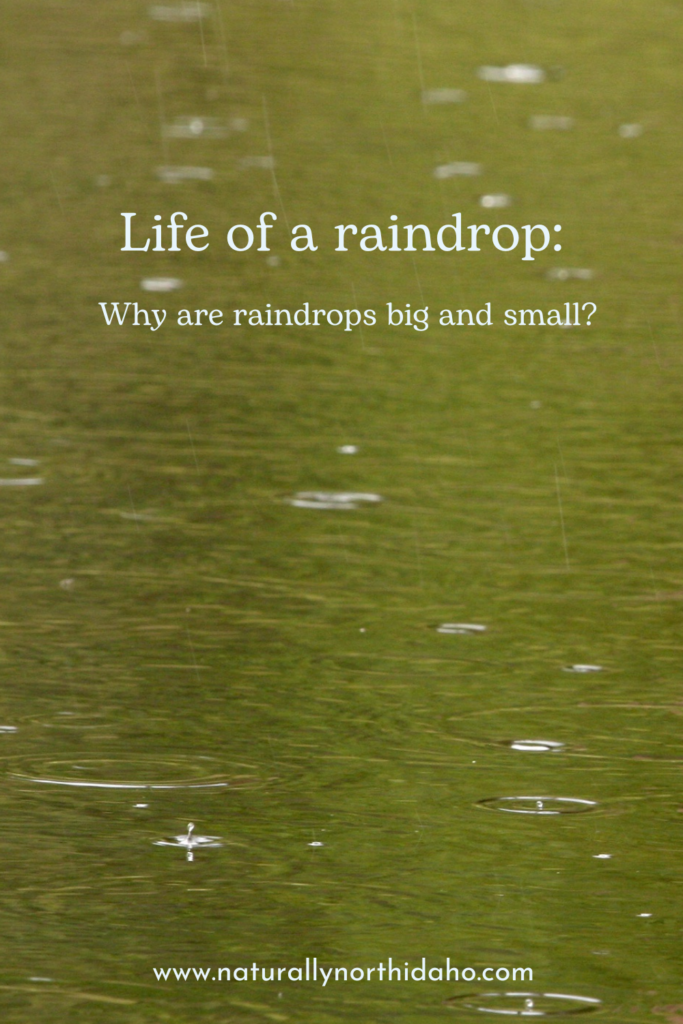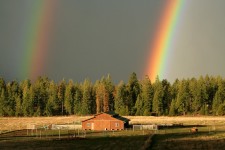Torrential downpours that drench you in a minute to gentle drizzles that last all day. Why are some raindrops big and others small?
Let’s start at the beginning.
Imagine you are a raindrop.

How is a raindrop made?
You are a particle (condensation nuclei) of dust, smoke or sea salt leftover from sea water evaporation. As you float through the air, water vapor condenses (turns to liquid water) onto you. The water wraps itself around you and you are a raindrop between the size of 0.01 mm to 0.05 mm in diameter (depending on how big of a particle you started as).
Now you’re a raindrop but too light to fall down. The cloud can support you.
Air is always moving, so you bump into a neighboring raindrop, you join together to become a bigger raindrop (coalescence). Whoops! You collide with another raindrop and then another. You are growing bigger.
Once you’re near 0.5 mm in diameter, you could potentially fall down to the ground as a raindrop.
But wait- what type of cloud are you in?
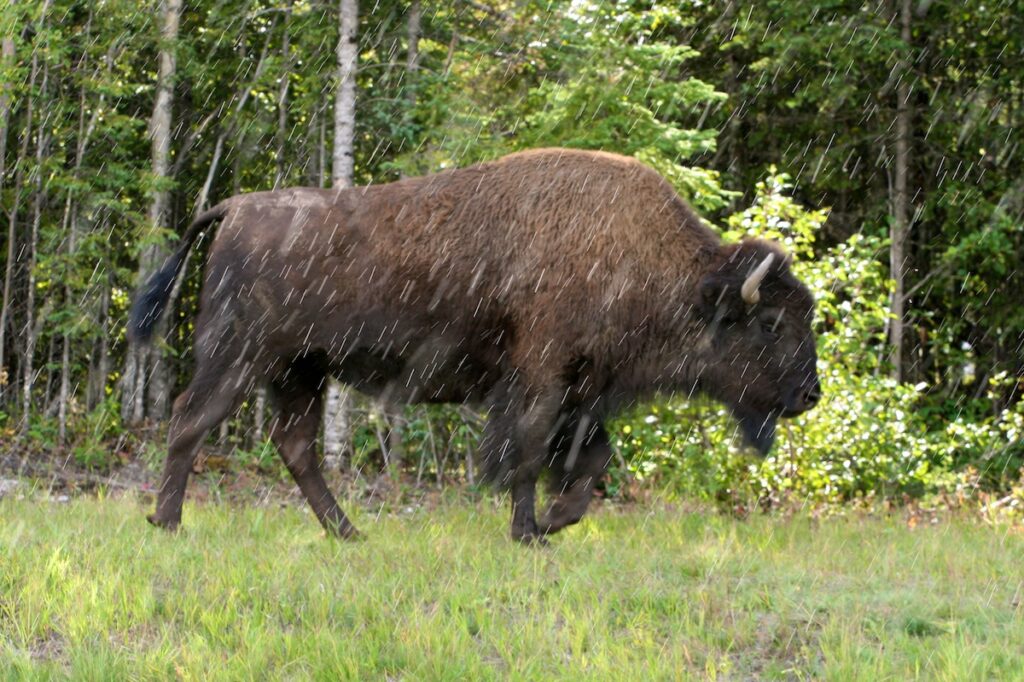
Why are raindrops big and small?
If you’re in stratus clouds (those dreary blankets of flat clouds that stretch for miles) at a low altitude, you’ll stay a small raindrop. You’ll be just under 0.5 mm in diameter and you’ll fall in a gentle, drizzle-like manner.
However, if you’re in a growing cumulonimbus cloud, you’re destined to be a large raindrop.
In cumulonimbus clouds, there will be updrafts that keep you from falling out of the cloud to the ground. As you circulate in the cloud there is ample turbulence to make you bump into neighboring raindrops- repeatedly. You grow in size.
Now you are 4 mm in diameter- a whopper of a raindrop- and still circulating. You bump into your neighbor but this time you don’t grow bigger but instead break apart into smaller raindrops.
The cumulonimbus’s updrafts could support you if you were bigger than 4 mm but the shape of you is more vulnerable to breaking.
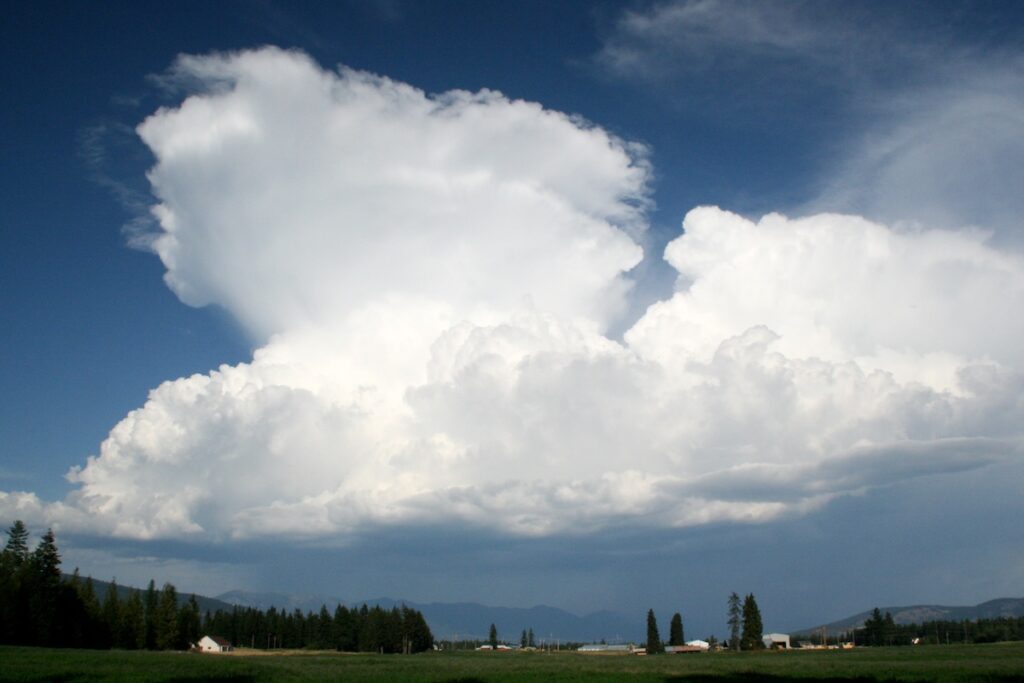
What shape are raindrops?
Have you been imagining yourself as a tear-shaped raindrop drawn in children’s coloring books? Tear-shaped raindrops are fun to draw but raindrops aren’t shaped that way.
Raindrop shape is based on the water’s surface tension and the pressure of the air pushing up against the bottom of the drop according to Alistair B. Fraser, Professor of Meteorology, Pennsylvania State University.
Raindrop shapes:
- Small raindrops, less than 1 mm = spherical (surface tension wins and raindrop is spherical)
- Medium raindrops, between 1 mm and 4.5 mm = hamburger bun shape (air pressure pushes up on bottom of drop, flattens it and starts to form a depression)
- Big raindrops, larger than 4.5 mm = parachute-like (the depression grows into an upside-down bag with a tube of water around the bottom edge
(Check out Bad Rain for drawings of raindrops.)
Depending on your initial particle size, the type of cloud you’re located in, and how many times you joined (coalesced) with other drops will determine whether you fall as a big raindrop or a small raindrop.
Once you escape the updraft in a cumulonimbus cloud or become too big for a stratus cloud to support you, you’ll fall down to the ground and end your journey as a raindrop.
Additional Resources:
- https://www.gi.alaska.edu/alaska-science-forum/raindrop-size
- https://www.usgs.gov/special-topics/water-science-school/science/raindrops-are-different-sizes
- https://wgntv.com/weather/weather-blog/do-meteorologists-have-specific-definitions-for-drizzle-light-rain-steady-rain-heavy-rain-downpour/
- https://www.foxweather.com/learn/7-facts-about-rain

